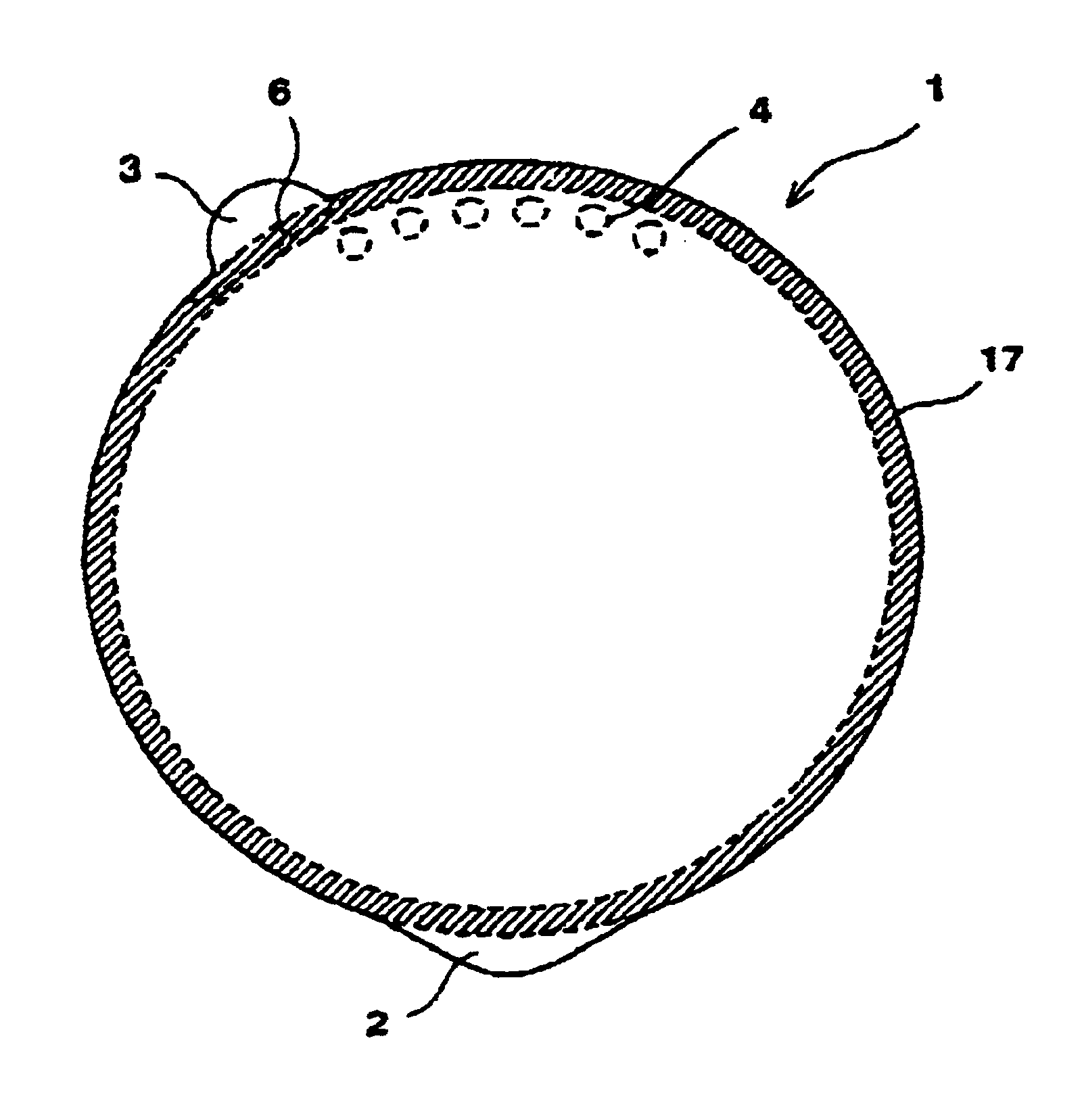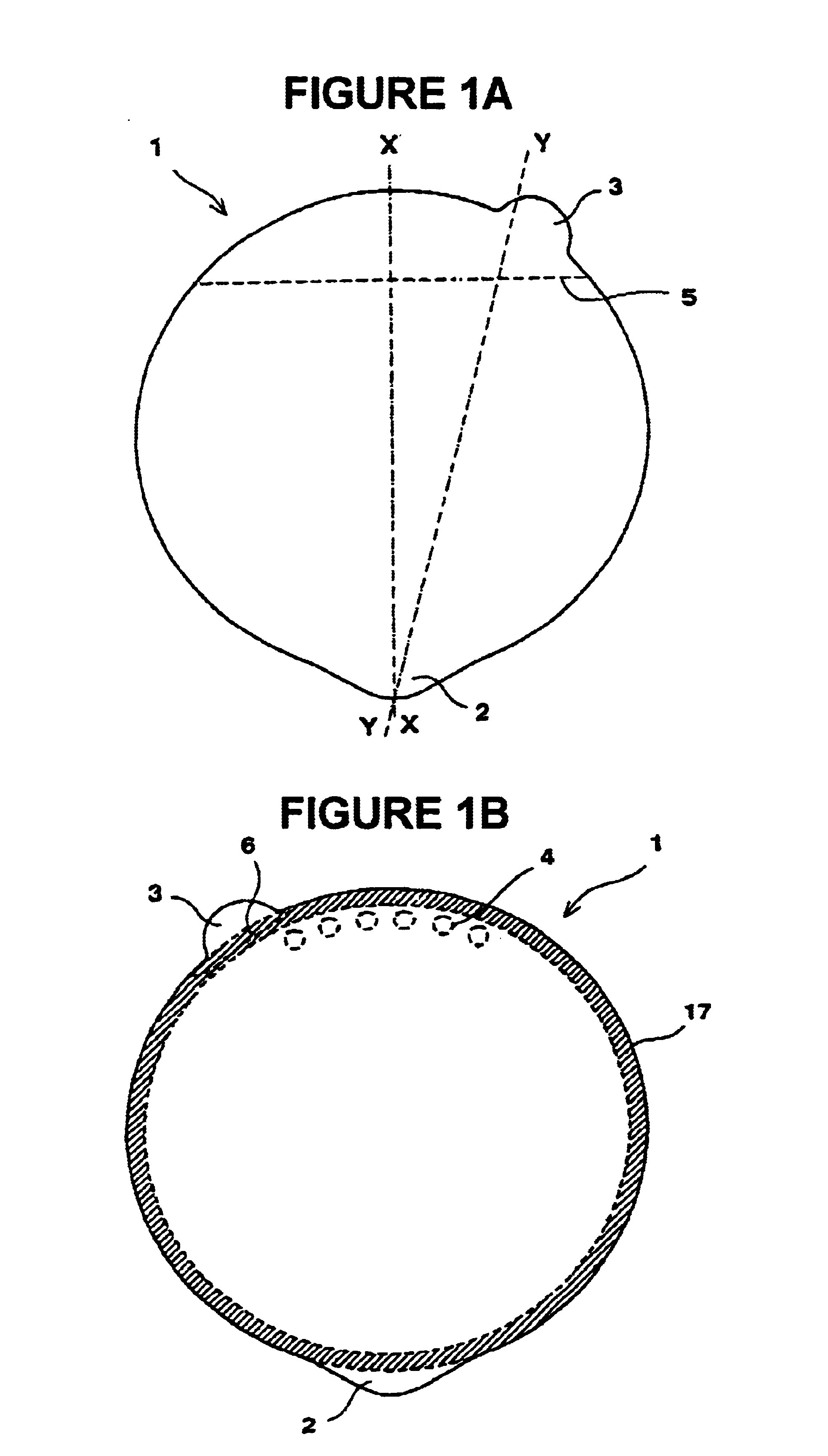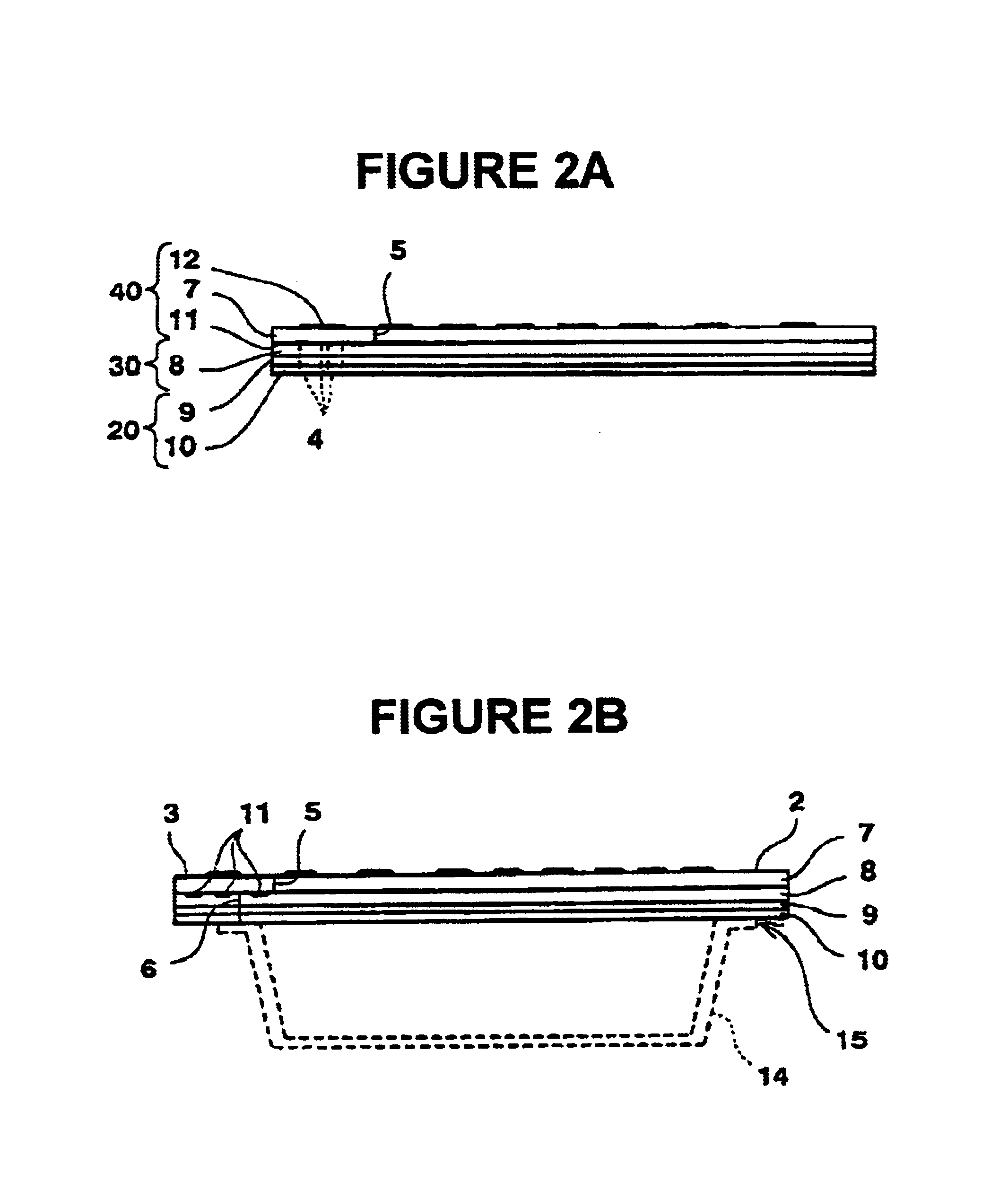Food container lid member having selectively peelable area
a technology of food containers and lids, applied in the direction of caps, liquid handling, identification means, etc., can solve the problems of increasing the time required to remove hot water, increasing the discharging rate of hot water, and taking a longer time to remove hot water
- Summary
- Abstract
- Description
- Claims
- Application Information
AI Technical Summary
Problems solved by technology
Method used
Image
Examples
example 2
Laminated products were produced according to the procedures same to those in Example 1 except that EVOH was used as the sealant 10, then slits were provided by cutting them into leaf-like form, and the lid member 1 was produced through a minute cutting and drawing process.
This lid member was stuck with heat-fusing to the cup-shaped container body made of polystyrene paper.
Continuous curve slits were employed as the first slits 4 and 6, and the slit zone 50 consisting of slits 5a inclined to mutually look outwardly were employed as the second slit 5 as illustrated in FIGS. 4(A) and (B).
Thus, a container for quickly cookable foods (the container for quickly cookable noodle) according to the present example was produced.
According to the lid member of the present invention, any desired number of apertures can be formed, thereby, blockage of the apertures by the foods in the container are prevented, and the hot water can rapidly be removed. Then, since the fragments of the lid member to...
PUM
| Property | Measurement | Unit |
|---|---|---|
| width | aaaaa | aaaaa |
| angle of inclination | aaaaa | aaaaa |
| thickness | aaaaa | aaaaa |
Abstract
Description
Claims
Application Information
 Login to View More
Login to View More - R&D
- Intellectual Property
- Life Sciences
- Materials
- Tech Scout
- Unparalleled Data Quality
- Higher Quality Content
- 60% Fewer Hallucinations
Browse by: Latest US Patents, China's latest patents, Technical Efficacy Thesaurus, Application Domain, Technology Topic, Popular Technical Reports.
© 2025 PatSnap. All rights reserved.Legal|Privacy policy|Modern Slavery Act Transparency Statement|Sitemap|About US| Contact US: help@patsnap.com



